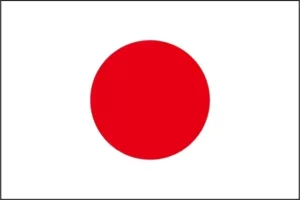Member Type Country
Japan

The Government of Japan co-chaired the Initiative with Palau, between 2005-2007, and with Thailand, between 2014-2016.
The Ministry of the Environment, Japan, is responsible for global environmental conservation, pollution control, and nature conservation. The ministry was formed in 2001 from the Environmental Agency established in 1971. Japan is one of the 8 founding countries of ICRI.
The Ministry of the Environment is currently leading the ICRI East Asia Regional Activities.
Related websites:
Surface area of Coral Reefs: 960 km2
The Action Plan to Conserve Coral Reef Ecosystems in Japan 2016 – 2020
The Action Plan to Conserve Coral Reef Ecosystems in Japan 2016-2020 was formulated with awareness to make the content more hands-on and practical, based on a hard look at what matters will be essential five years from 2016. This action plan is expected for a variety of organizations to promote an integrated implementation of initiatives toward conservation of coral reef ecosystems.
The property numbers more than 30 islands clustered in three groups and covers surface area of 7,939 hectares. The islands offer a variety of landscapes and are home to a wealth of fauna, including the Bonin Flying Fox, a critically endangered bat, and 195 endangered bird species. Four-hundred and forty-one native plant taxa have been documented on the islands whose waters support numerous species of fish, cetaceans and corals. Ogasawara Islands’ ecosystems reflect a range of evolutionary processes illustrated through its assemblage of plant species from both southeast and northwest Asia, alongside many endemic species. For more information visit Ogasawara Islands Nature Information Center.
- Kushimoto Coral Communities: 08/11/05; Wakayama; 574 ha; 33°27’N 135°47’E. National Park. A unique littoral area rich in high-latitude to tropical marine life (120 species), situated at the southern tip of Kii Peninsula. Kuroshio Current, the major warm current on the earth, touches the area allowing the formation of a peculiarly warm environment supporting tropical organisms on the main island of Japan. Acropora hyacinthus, the dominant species, is important for its high nutrition productivity and topography formation capacity, and also significant for tourism resources because of its beautiful tabular coral landscape. The highest concentration of Catalaphyllia jardenei population was identified only in this area, making it the largest marine colony in Japan and northernmost distribution in the world. The remarkable coral communities support rich biodiversity with nutrition and habitat sources stabilising the neritic environment. The site has special value for marine fisheries, leisure fishing, scientific research and tourism, particularly coral observation and scuba diving. Typhoon, natural retreat of the warm current, Arita Bay development activities, illegal and over-fishing are considered as major threats to the coral communities. Ramsar site no. 1548. Most recent RIS information: 2005.
- Kerama-shoto Coral Reef: 08/11/05; Okinawa; 353 ha; 26°12’N 127°18’E. National Park. Part of the Kerama-shoto Islands at the west of Okinawa, the designated area is divided in two major areas: 120 ha along the west coast of Tokashiki Island and 233 ha among deserted islands. The coral reef consists of 248 species of well-developed fringing corals, tabular, mound, horn-shaped, branching and sheet reef-building ones, densely distributed in water with abundant colourful fishes like Chromis notata, Chaetodontidae and Labridae species. Some places are covered with 90% corals, mainly tabular and arborescent Acropora. The reefs are the supply sources for larvae corals. Past threats to the reef were crown-of-thorns starfish and, in 1998, severe coral bleaching was observed. Control campaigns by local communities are helping to restore the site. Much of the area retains natural beauty attracting over 100,000 scuba-divers and tourists every year. Whale-watching is also a popular activity in winter. Ramsar site no. 1546. Most recent RIS information: 2005.
For more information visit RAMSAR sites in Japan
- Japan Report to the 24th GM
- Japan Report to the 21st GM
- Japan Report to the 20th GM
- Japan Report to the 19th GM
- East Asia Initiative on MPA networks Report (GM 24)
- Japan Report to the 25th ICRI General Meeting
- Japan Report to the 26th General Meeting
- Report of the 7th ICRI East Asia Regional Workshop
- Japan report to the 27th ICRI General Meeting
- Japan report to the 28th ICRI General Meeting
- Japan report to the 29th ICRI General Meeting
- Japan report to the 31st ICRI General Meeting
- Japan report to the 32nd ICRI General Meeting
- Japan report to the 33rd ICRI General Meeting
- Japan report to the 37th ICRI General Meeting
- Japan report to the 38th ICRI General Meeting
- Spotlight on a reef restoration project in Palau by the Japanese Ministry of Environment
- Coral Research & Development Platform (CORDAP) New Strategic Plan 2022-2025
- Summary of ICRI side event at the CBD negotiations in Geneva: 3 ways to save coral reefs through the GBF
- Global Coral R&D Accelerator Platform initiates plan to save coral reefs
- The 7th ICRI East Asia Regional Workshop
- UNEP, Japan Announce Marine Litter Initiative
- ICRI Hosts Successful Event on Restoring Coral Reefs
- ICRI Coral Reef Restoration Virtual Event for Decade on Ecosystem Restoration
- Side event during CBD meetings: Three Ways to Save Coral Reefs through the GBF: An informal exchange with coral reef champions
- Side event during CBD meetings: Three Ways to Save Coral Reefs through the GBF: An informal exchange with coral reef champions
- 12th Annual World Ocean Summit & Expo 2025
Last Updated: 12 September 2025